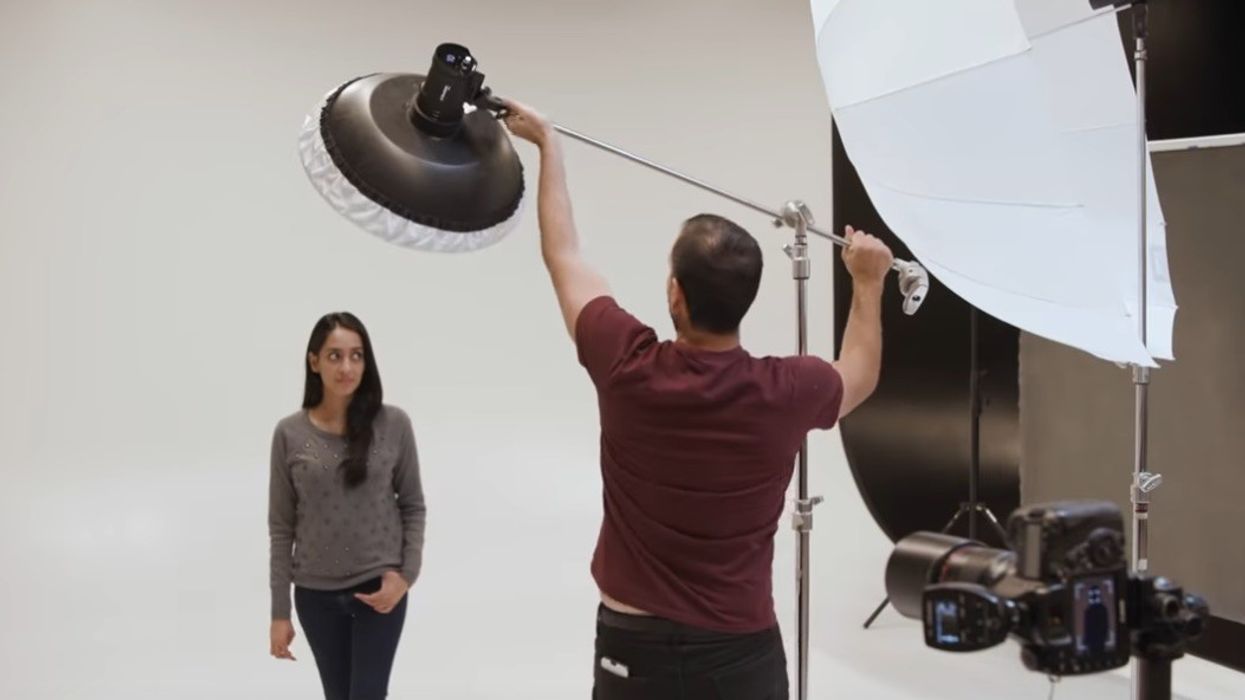5 Lighting Patterns You Should Know as a Filmmaker
Want an easy way to add depth and drama to your scenes? You'd better master these lighting patterns!

And you can do so in less than ten minutes because Southern California photographer Pye Jirsa has teamed up with Adorama to discuss the main five lighting patterns in a new video.
Although this primer is photography-based and utilizes studio lighting, it provides some good basics that can be applied to film sets and can be used with natural lighting as well.
Watch the video for more!
1. Flat lighting
Flat light is a source that comes from the same position as the camera. Think the on-camera flash, or the light coming through a window behind the camera.
Flat lighting is going to have the fewest shadows. Because of this, it's a soft and flattering light source often used in beauty photography.
2. Butterfly lighting
Light flat lighting, this light source is coming from directly in front of the subject, but is now raised above the subject and angled down.
It's generally known as "butterfly lighting" because of the butterfly-shaped shadow created under the subject's nose. (It's also sometimes called "Paramount lighting" since Paramount Pictures often utilized this set-up.)
This lighting is still flattering and fills in facial lines, but it adds more drama and shadow.
3. Loop lighting
If you were to move your butterfly light to be at about a 45-degree angle from your subject, you'd have loop lighting. The light source is above and slightly to the side of the subject, so it's a more directional light. It creates a small "loop" nose shadow cast onto the cheek.
4. Rembrandt lighting
In this lighting pattern, the key light is angled even more, and shadows are deepened so that shadow from the nose connects with shadows on the side of the face, creating a small triangle of highlight on the cheekbone.
This lighting set-up is, of course, named for the Dutch painter who tended to paint his subjects with this type of light and shadow.
It is a classic and popular lighting pattern that is dramatic and visually interesting. Plus, you can easily control the amount of drama and shadow with fill light.
5. Split lighting
In this set-up, the key light is finally moved so it is coming from only one side of the subject. The other side of the subject is in shadow.
This is the most dramatic lighting pattern that displays a stark contrast between dark and light. It also can expose imperfections, so it might not always be the most flattering light for your subject.
Keep in mind, you can achieve these same lighting patterns on locations with natural light. You would simply shift the positions of your subjects and your camera to create these effects.
What's next? Check out some more lighting articles!
Learn more about lighting patterns and basic photography lighting, then check out some of the art that inspired great filmmakers. Maybe even try some dramatic chiaroscuro lighting!
Source: Adorama











![Ethos, Pathos, Logos: 20 Effective Ways to Advertise [Infographic]](https://nofilmschool.com/media-library/ethos-pathos-logos-20-effective-ways-to-advertise-infographic.jpg?id=34064614&width=600&height=600&quality=90&coordinates=560%2C0%2C0%2C0)

